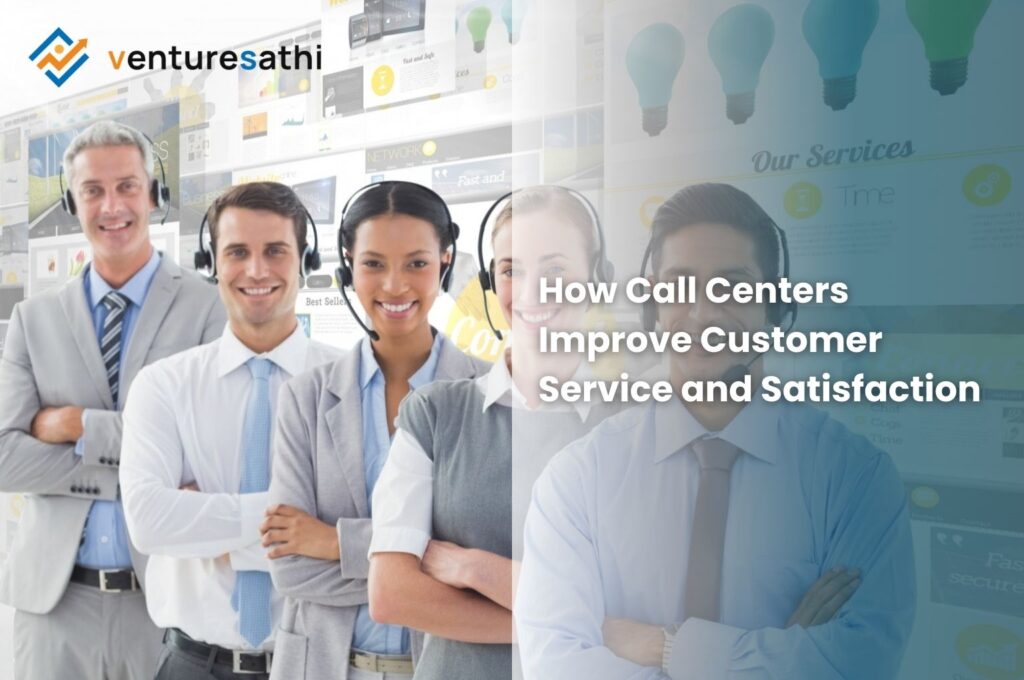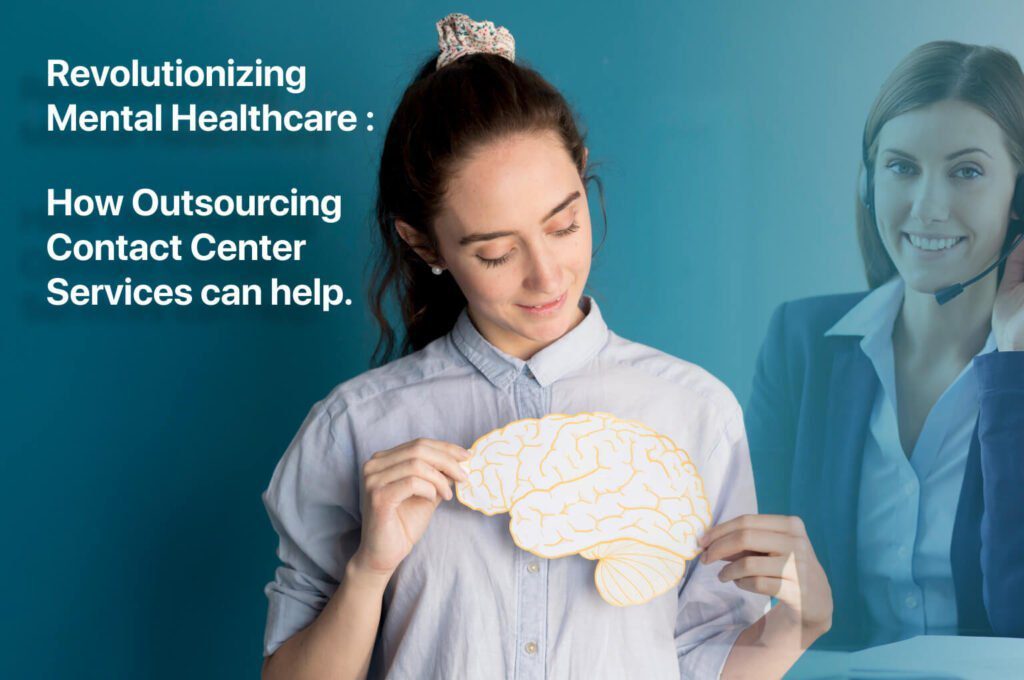SaaS Essentials: Understanding Software as a Service
Software-as-a-service (SaaS) is revolutionizing how businesses access and utilize software. With SaaS, you can access applications online from any device, eliminating the need for cumbersome installations. Unlike traditional software, SaaS operates on a subscription-based model, giving you the flexibility to pay as you go and cancel anytime.
Leveraging cloud computing, SaaS solutions offer unmatched convenience and reliability. According to Statista, the SaaS market is estimated to be worth approximately 197 billion U.S. dollars in 2023 and is estimated to reach 232 billion U.S. dollars by 2024. This cloud-based approach ensures seamless updates, robust security, and reduced IT costs. With millions of businesses adopting SaaS, it’s clear that this model not only enhances efficiency but also drives business growth. Embrace the future with SaaS and transform your software experience.
SaaS Technology: A Game Changer in Software Delivery
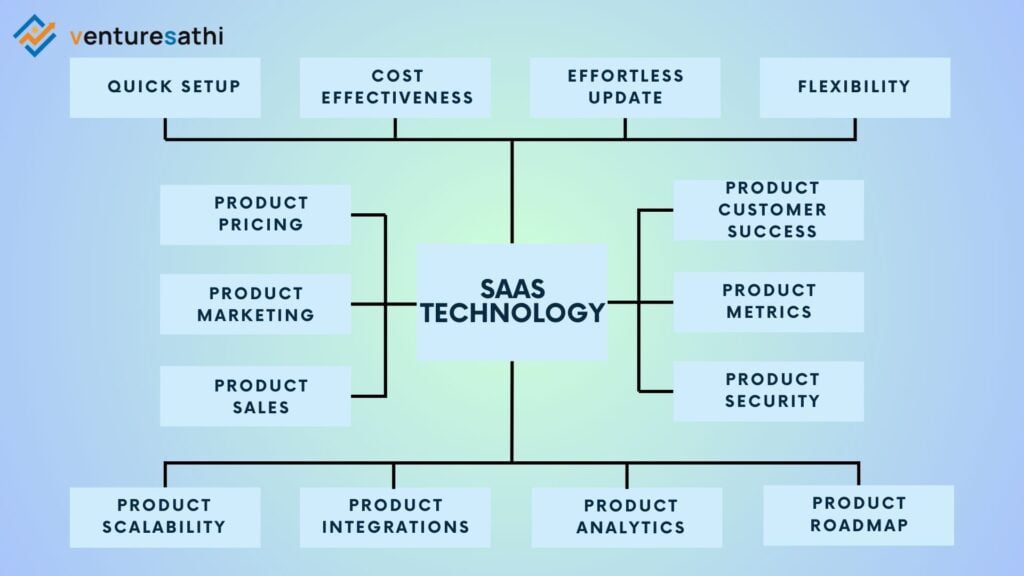
The trajectory of the SaaS market is a testament to its enduring appeal. As the SaaS product landscape continues to evolve, one cannot ignore the tremendous surge in SaaS product development. Let’s explore the driving factors motivating both providers and customers to participate in this burgeoning field.
Quick Setup
SaaS, powered by cloud computing, ensures fast and easy setup. With hosting and installation handled by the provider, launching your SaaS product is quick and straightforward. No more waiting on IT for deployment—SaaS solutions are ready to use almost instantly.
Cost Effectiveness
SaaS’s subscription-based model is budget-friendly. It eliminates the high maintenance and licensing fees of traditional software, significantly reducing overhead costs.
Effortless Update
Say goodbye to tedious software updates. SaaS vendors provide seamless, one-click updates, ensuring your software is always up-to-date without any hassle.
Flexibility
SaaS solutions offer various subscription plans tailored to meet different business needs. This adaptability makes it easy to find the perfect fit for your requirements.
SaaS Product Pricing
Choosing the right pricing strategy is crucial. Options include usage-based, tiered, flat-rate, freemium, and per-feature models. Aligning your pricing with your business model is key to success.
SaaS Product Marketing
Launching a SaaS product requires precise marketing strategies. Effective tactics include partnerships, advertising, social media, content marketing, and SEO. Engaging your target audience is essential for a successful launch.
SaaS Product Sales
The SaaS sales funnel guides prospective customers from initial awareness to loyal users. Implementing effective sales techniques maximizes conversion rates.
SaaS Product Customer Success
Customer satisfaction and retention are crucial. Effective onboarding, responsive support, and maintaining engagement build trust and loyalty.
Initiate Your Hassle-Free Setup Now. Contact Venturesathi for your custom SaaS product.
SaaS Product Metrics
Key performance indicators (KPIs) like churn rate and customer lifetime value help measure your product’s performance. These insights guide strategic decisions.
SaaS Product Security
Data security is paramount. Compliance with data protection regulations and implementing strong security measures are essential to maintaining user trust.
SaaS Product Scalability
Scalability is critical. Your SaaS infrastructure must support growth without compromising performance, ensuring a seamless user experience.
SaaS Product Integrations
Integrations expand your product’s functionality by enabling compatibility with third-party applications. A solid integration strategy enhances your SaaS solution’s utility.
SaaS Product Roadmap
A detailed roadmap is vital for strategic planning. It outlines feature specifications, technology stack choices, and product architecture.
SaaS Product Analytics
User analytics provide insights into engagement and feature usage. This data helps optimize the user experience and improve overall product performance.
For more on optimizing your SaaS journey, check out our blog: How to Choose the Best SaaS Solution Partner for Your Business!
The Roadmap to Developing Your SaaS Solution
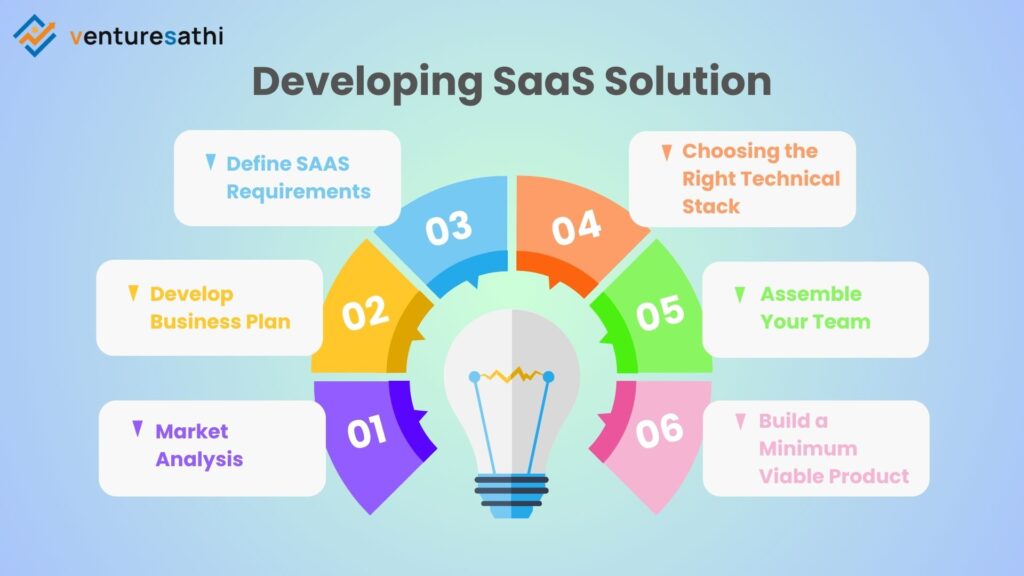
The journey to building a SaaS product involves several well-defined steps:
Step #1: Market Analysis
Obviously, the first step in starting a business or producing a product is to research the industry and identify a target market for the solution you’re working on.
Who are you trying to reach? – Who is the ideal customer that you want to sell your products to? What characteristics characterize your ideal client, and what are their inclinations, reservations, and demographics?
What are the primary things they want? – What is the intended audience searching for? One can assume, for instance, that users of Google Docs are looking for an easy way to produce papers and conveniently share them in real time with many engineers. Anything that helps them reach this objective ought to play a part in their solution—and eventually yours.
Who are your most formidable rivals? – In the end, figuring out how you can differentiate yourself from the competitors can help you create your unique selling point. Gaining a competitive edge and spying on them are further benefits.
Which business model do you use? Basically, what is your intended mode of operation? Despite your margins, how many subscriptions will you provide, how much will they cost, and how many clients must you convert to become profitable?
Step #2: Develop Business plan
How can you set your product apart from the competition? – The identity of your business and the values you wish to impart to your clients. This unique value proposition (UVP) should ideally be succinct and memorable.
What are the main issues that your target audience is facing, and how will you address them? – Identify the issues that your target market is having, then develop tactics that will enable you to outperform your competition in solving those issues.
What’s the most effective way to engage with your desired audience? This is the point at which advertising and marketing are useful. Which strategies—partnerships, advertising, social media, content marketing, or search engine optimization (SEO)—will you use to reach your target audience?
With your SaaS solution, how will you generate revenue? Establish your monetization plan. Think about various membership packages, cutting-edge assistance, and various upgrades. Pricing models such as usage-based, tiered, flat-rate, freemium, and per-feature are available.
How will you fund the growth of your platform? — Estimate all your expenses and decide where you’ll get the money to continue developing your SaaS application.
What are your primary objectives and objectives? — Finally, make a list of objectives and targets that will highlight your product’s success.
Step #3: Define SAAS requirements.
The development of a SaaS product hinges on comprehensive planning, with a focus on customization, integration possibilities, and security. SaaS applications must be designed with maximum security, as it’s the bedrock of service reliability. Flexibility is also a key consideration, enabling your program to adapt seamlessly to evolving user demands. Because SaaS systems share some characteristics, a clear plan for customization, integration possibilities, and security is required. Maximum security is critical in a SaaS model because it is the foundation of a solid service. Consumer demands are continuously changing, so you must be able to adapt. Your program should also be designed to manage a rising number of users without slowing down.
Step #4: Choosing the right Technical Stack:
Selecting the ideal technical stack is pivotal to your SaaS product’s success. The choice of technologies impacts both the front-end and back-end components of your product:
Front-end: The front-end is basically everything about your SaaS platform that users will view and interact with. Changes to the front end will influence the UI and visibility of your platform.
It is advised that you utilize contemporary full-stack frameworks such as:
- JavaScript (js) is a popular framework for developing lightweight, easy-to-maintain apps.
- Angular is mostly used to handle user interactions in a web browser.
- React is the most popular JavaScript framework and the market leader now.
Back-end: The back end of your SaaS product is the invisible workhorse, responsible for functionality and performance. Solid frameworks like Django, Node.js, or Ruby on Rails are the preferred choices. For example, Ruby on Rails stands out for its security, scalability, cost-effectiveness, and speed.
Database: Selecting an appropriate database is crucial for data management. Consider utilizing PostgreSQL, MySQL, or a NoSQL database based on your specific requirements. PostgreSQL is a leading open-source database, offering advanced features.
Hosting: When it comes to hosting, reputable cloud providers like Amazon (AWS), Google, Microsoft, or Heroku are reliable choices. Amazon Web Services, with its proven track record of dependability, flexibility, and security, is a popular selection.
Step #5: Assemble Your Team
The success of your SaaS product is ultimately determined by the team you hire to build it. Who would you require to create a successful product? Please take into account the following team members:
- Designers
- Software designers
- Project manager
- Business analyst
- Testers/Quality assurance engineer
- Marketing experts
The decision to hire an in-house team, engage freelancers, or collaborate with a software development company is contingent on your specific needs and resources.
Step #6: Build a Minimum Viable Product (MVP)
An MVP is not a complete product, but it contains enough features to attract early adopters and prove an idea. The team has prepared the MVP for market launch and can further scale and modify it as needed.
Although it is not a finished product, it solves a significant problem for your clients. An MVP must be appealing to your target audience and make them fall in love with your product. The key goals of creating an MVP before constructing a fully functional SaaS application are as follows:
Gather user input. What did your customers appreciate about your product? What modifications could be made to improve the user experience?
Try it out. Make certain that your solution is designed to meet the needs of a continually expanding SaaS market. This can assist you in determining whether there will be an increase in demand for your goods.
Make use of many notions. Concentrate on how your product will affect your users rather than specific features. Products sell, not features.
Embark on your SaaS development journey with confidence. Venturesathi’s team of seasoned experts is here to guide you through every step of the process. From conceptualization to launch, Venturesathi is committed to ensuring your SaaS solution stands out in the market. Let’s collaborate to transform your vision into a stellar SaaS product. Partner with Venturesathi’s SaaS development experts today!
Saas Product Development Stages
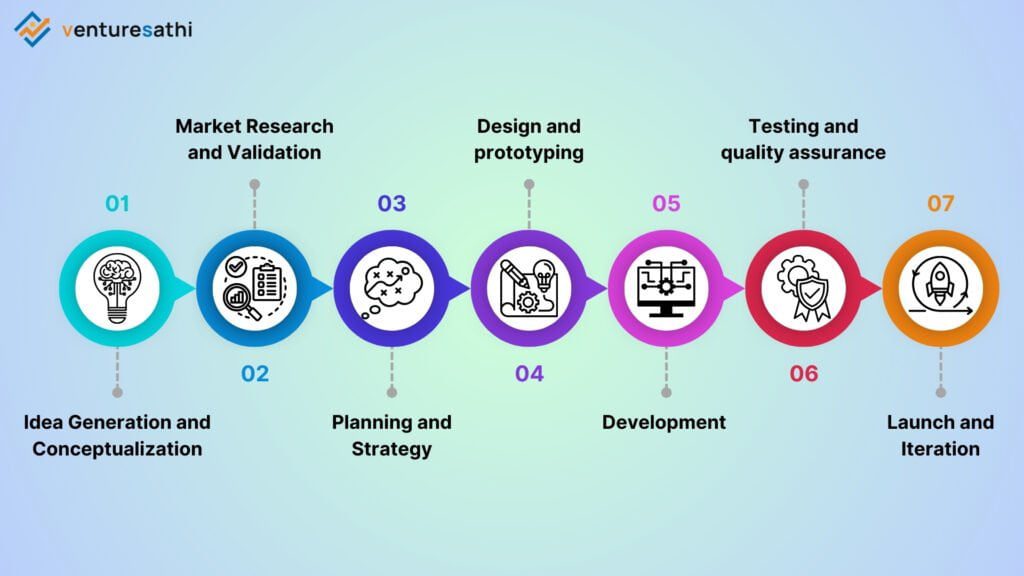
Idea Generation and Conceptualization: At this stage, brainstorming, market research, and identifying an issue to address or a market need are all part of the process. It consists of creating the first concept for the SaaS product.
Market Research and Validation: This stage involves testing the concept against the target market. This entails verifying the product concept through market research, competitor analysis, and gathering feedback from potential users to ensure that the product is in demand.
Planning and Strategy: Creating a clear roadmap, establishing goals, setting timetables, and strategizing the development process are all part of this stage. It includes developing feature specifications, selecting a technology stack, and designing the overall product architecture.
Design and prototyping: Creating wireframes, designing the user interface (UI) and user experience (UX), and producing a prototype are all part of this process. It is critical to visualize and test the product’s user interaction.
Development: During this stage, the SaaS solution is actually built. This includes coding, programming, and integrating features based on the specifications established during the planning process.
Testing and quality assurance: The team rigorously tests the generated product to discover and correct any flaws or issues. Quality assurance guarantees that the product works properly and meets usability and performance criteria.
Launch and Iteration: The product is ready for market deployment. Marketing, customer support, and making the product available to users are all part of the launch process. Following the launch, the product team gathers user input and data for continual development via iterations and upgrades.
The Road Ahead
The world of SaaS is dynamic and ripe with opportunities for innovation. Whether you’re an aspiring entrepreneur, a developer, or an industry veteran, your journey in the realm of SaaS product development can begin today.
SaaS product development is an intricate and multifaceted journey. It demands meticulous attention at every stage, as even minor oversights can impact the overall product. The process doesn’t culminate with development; it extends to the successful launch and market reception. If the journey appears overwhelming, there are digital product agencies ready to assist or manage the entire process on your behalf.
The development of a remarkable SaaS solution encompasses numerous facets, from the initial idea to the final iteration. If you’re interested in creating a SaaS product for your company and require expert guidance, don’t hesitate to contact us today. Our experienced team is here to support your journey.


